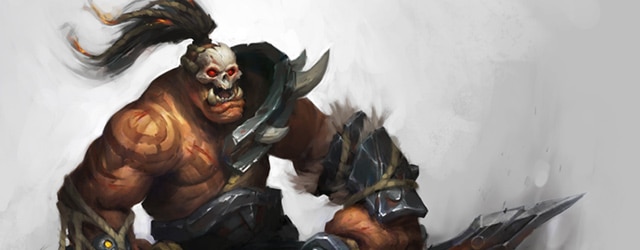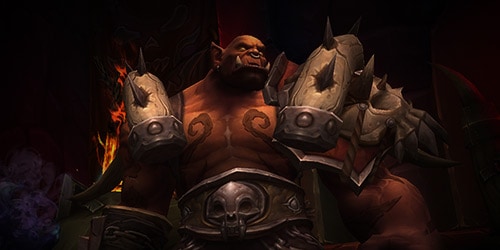The website will be moved to another host, so until that is done for the next few days there won’t be any updates here on the website. There’s a chance it won’t be done until after the weekend. So instead keep up with us on youtube, facebook or twitter! That way you’ll know when this weekend’s podcast will be released!
This really needs to introducing, WoD raiding philosophy!
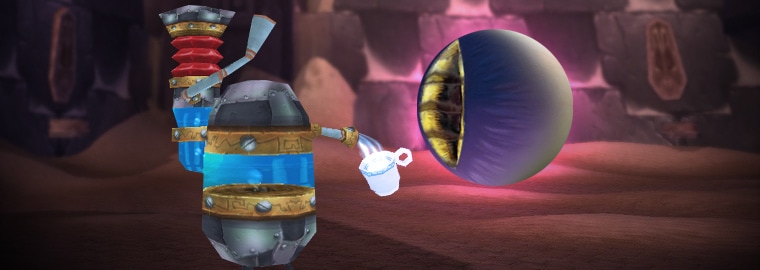

Over the course of WoW’s nearly 10-year history, raiding has probably undergone more iteration and change than any other game system. To put the upcoming Warlords of Draenor raid changes into proper context, this three-part blog series will attempt to retrace the twists and turns of our raid design philosophy from Molten Core through Siege of Orgrimmar.
In this final entry, Lead Game Designer Ion “Watcher” Hazzikostas wraps things up by taking a look at the raiding philosophy and design changes coming in Warlords of Draenor (Warlords).
Warlords of Draenor (2014)
As we announced at BlizzCon, we’re excited about the opportunity to extend our Flexible Raid tech to address some of the long-standing problems we’ve been grappling with as a design team for over 5 years now. Here’s a quick breakdown of how the new system works: We’re relabeling Flexible Raid mode Normal, and it will serve as the new baseline point of entry to organized raiding. We’re also combining the current 10-player and 25-player Normal modes into a single Heroic difficulty. Finally, we’re consolidating 10-player and 25-player Heroic into a new fixed-size 20-player Mythic difficulty.
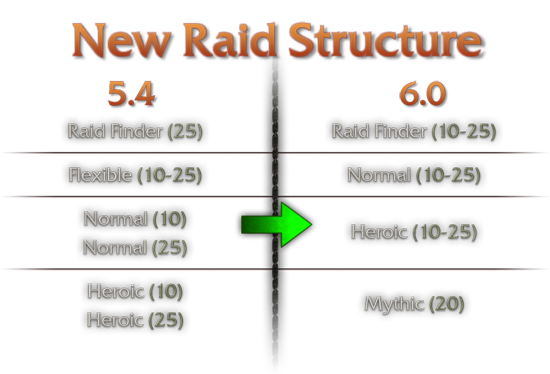

This system will allow the vast majority of players to raid with a wide variety of possible raid sizes, and reap the benefits of that structure. One of the major upsides of a 13-player raid is that you don’t have to worry about canceling if one or two people aren’t able to make it; you also don’t have to worry about asking someone to sit out if everyone shows up. This, in turn, means that raiding in an organized group is possible without the same feeling of obligation, and that such groups will be much more resilient in practice.
While we’ve made significant strides in tuning 10-player and 25-player Normal modes to be comparable in difficulty over the course of Mists of Pandaria (Mists), precise 10 vs. 25 Heroic tuning has continued to be a major challenge, especially on important fights such as Lei Shen (easier with 10) and Garrosh (easier with 25). Consolidating to a single raid size for Mythic will allow us to focus on delivering the best possible experience for our competitive hardcore raiders, while the flexible nature of Normal and Heroic mode provides an avenue for smaller groups to organically grow and continue raiding if they want to give Mythic a try.
Group Finder
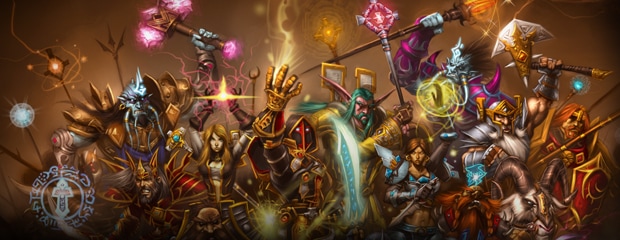

Another central innovation in Warlords is our Group Finder feature, which will allow players to easily form and search for raid groups (among other activities) with players from their entire region. While this series of blogs has mostly focused on pre-existing social structures, pick-up groups continue to be tremendously important. Chance meetings in such groups have formed the basis for many a friendship, and recurring weekly pickup groups have given rise to more than a few guilds over the years. For players who want to take the next step beyond Raid Finder, or who want to find a weekend run for their alt, or who just need a last-minute tenth member for their raid, Group Finder will make that process easier than ever before.
Raid Finder
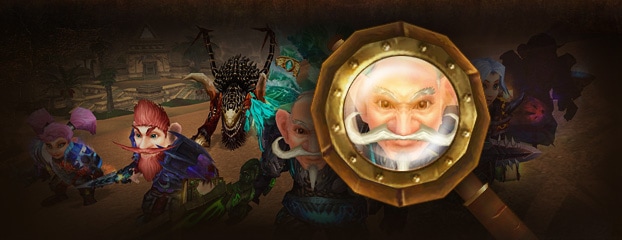

Raid Finder still has an important place within the new Warlords raid structure. Many players cannot or simply do not want to commit to a fixed group. And no matter how convenient we make organized raiding through Group Finder, it’ll never be something you can jump in and do for 45 minutes during your downtime on a busy day, the way you might do a Raid Finder wing.
However, we’ve also learned other lessons from our experience with Raid Finder over the past two and a half years. Raiding a single zone with a guild or group of friends can stay engaging for months, and one of the core reasons for that is the pacing of progression through a zone. A raid group might start out learning a new boss or two each week; that pace slows as the raid reaches the later bosses near the end of a zone, and more time each week is spent re-clearing “farm content” to gear up further. This keeps the experience varied, and even if you don’t get the specific loot you were hoping for in a given week, you’re seeing your friends and guildmates progress and get stronger, and you’re feeling the impact of those upgrades as you kill bosses faster and faster.
Raid Finder offers none of that. Your ninth clear of the Underhold section of Siege of Orgrimmar is likely no faster than your second (and might even be slower); you aren’t experiencing anything new or different. So how can we make Raid Finder a more compelling and enjoyable experience? A decent first step is to make it significantly more generous than it has been in the past, nearly doubling the rate of reward to better match the overall pacing of the content.
Our intent is for Raid Finder to allow players to experience our raid content, see the conclusion of major storylines, and witness the epic environments that our artists create without needing to commit to an organized raid group. We’d like to focus on that purity of purpose, and minimize the elements that have made guild raiders feel like they needed to do Raid Finder each week as part of their core progression. Accordingly, while loot will be awarded more frequently, Raid Finder in Warlords will have different loot tables than the Normal, Heroic, or Mythic versions of the raids, along with different item art. The gear will fall in between dungeon loot and Normal mode raid loot in terms of power, as it does today, but without the set bonuses and specific trinkets that tend to make raiders feel like they need to run Raid Finder alongside their weekly guild raids today.
After a player gets quickly geared up through Raid Finder and starts thinking about venturing into Normal mode for better rewards, their Raid Finder loot and combat experience should prepare them to take that next step—and Group Finder will make the process easier than ever before.
Raid Lockouts
In Warlords, each raid difficulty will have its own weekly lockout. We gave careful consideration to how the lockout system should work, and which difficulties (if any) would share lockouts. Having seen how Flex works today, it’s clear there are many benefits to having our raid difficulties on separate lockouts: Players might currently raid Normal or Heroic Siege of Orgrimmar with their guilds on a set schedule, but then join real-life friends on another server for weekend Flex runs and a chance to grab some off-spec loot. Players who are regularly clearing Normal, let alone Heroic, Siege of Orgrimmar quickly find that they don’t need much main-spec loot from Flex. Most players who are doing Siege in multiple difficulties each week are doing so with different social groups, and we’d like to preserve players’ freedom to do so.
As for Heroic and Mythic, having those difficulties share a lockout would present a number of technical as well as logistical challenges: Heroic is a flexible-size loot-based lockout; Mythic is a fixed-size boss-based lockout, limited to a single realm, with a static ID. The two simply aren’t congruent. Having these on a separate lockout also simplifies some things for high-end guilds that are trying to manage progress on a limited schedule, and currently have to carefully budget enough time at the end of each week to re-kill remaining bosses on Normal difficulty for loot. In Warlords, those groups will be able to frontload their farming for the week and then work on Mythic progression for the rest of the week without worry.
Reflecting on the “Trial of the Crusader problem” in Patch 3.2, much of the issue there stemmed from the way Emblems worked at the time. Badges obtained from raid bosses and dungeons were necessary just to buy set pieces, and so guilds felt obligated to keep clearing something like 10-player Normal Trial of the Crusader, even if they needed none of the loot, just for the extra Emblems. In Warlords, we are scaling back Valor, along with the incentive to cap Valor weekly. Less linear layouts and shortcuts that allow experienced groups to skip to certain bosses should let raiders target the specific content that interests them. In general, we’re erring on the side of giving players choice and freedom, and we feel that our character progression systems are better structured now and will not encourage excessive repetition of the same content.
Raiding Draenor
The raiding system we’re introducing in Warlords draws upon ten years of experience and all of the lessons we’ve learned along the way. We feel this system will provide the best possible raid experience to as many players as possible, regardless of their play style, and we’re excited for you all to try it. We’ll be paying close attention to your constructive feedback, and watching carefully once raid testing begins in our upcoming beta.
The second part of the raiding philosophy blog series has come out today! And the next part should be out tommorow!


Over the course of WoW’s nearly 10-year history, raiding has probably undergone more iteration and change than any other game system. To put the upcoming Warlords of Draenor raid changes into proper context, this three-part blog series will attempt to retrace the twists and turns of our raid design philosophy from Molten Core through Siege of Orgrimmar.
We continue the series by taking a look at raiding today, beginning with Cataclysm through Mists of Pandaria. If you missed Part 1, you can read it here.
Cataclysm (2010-2012)
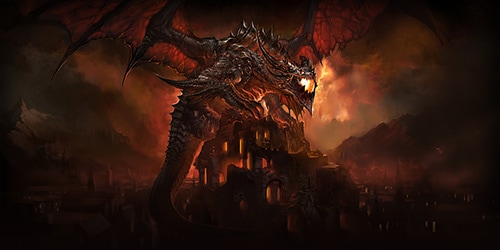

After the rapid iteration on raid systems over the course of Wrath of the Lich King’s content updates, we approached Cataclysm aiming to wrap those designs into a more streamlined package. There were two major concerns that we wanted to address:
- 10-player raiding had grown very popular due to its accessibility, but we were increasingly hearing from many of those raiders that they felt like they didn’t have the opportunity to prove themselves on the hardest content or earn the best gear in the game.
- Players often felt obligated to run both 10-player and 25-player modes of the same content each week in order to optimize their character, which could accelerate burnout. (Best-in-slot trinkets and other items on the unique 10-player loot tables didn’t help here.)
Guided by these concerns, we decided to consolidate 10-player and 25-player modes into a single difficulty, single reward tier, and single raid lockout. So in Cataclysm, we allowed raiders to choose their preferred raid size and experience the content as they saw fit.
While we were motivated by good intentions, these changes had some unfortunate side effects. . . .
- The need for equal difficulty between the two modes meant that when we encountered organic imbalances (e.g. spreading out requires more coordination with more players in the same space), no longer could we err on the side of just letting 10-player be easier. We had to try to adjust numbers or other mechanics to offset the disparity, and that was a challenging problem that we lacked prior experience in solving, especially when tuning cutting-edge Heroic content. As a result, there were many differences between the two modes, particularly early in the expansion.
- Unifying the difficulty of the two modes mainly involved increasing the difficulty of 10-player mode. This left many players who had enjoyed success in 10-player Normal Icecrown Citadel feeling unable to get any sort of foothold in Cataclysm raiding.
- While in theory players could now choose their preferred mode of raiding, in reality equalizing rewards encouraged a persistent downward pressure on raid size: Growing from 10 to 25 was nearly impossible logistically, whereas challenging bosses or attendance woes continually tempted 25-player raids to downsize and just keep going with their 10 “best” players. Previously these temptations were offset by the fact that switching to 10-player mode yielded weaker loot and different achievements, but the Cataclysm changes removed that countervailing motivation.
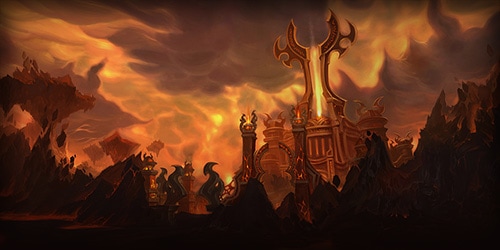

We got better at balancing the two modes over the course of the expansion, but the social consequences of the change continued to reverberate. In particular, raiding had become inaccessible to players who previously had enjoyed playing with their friends or pickup groups, and that was a problem.
Patch 4.3: Raid Finder
Just as Dungeon Finder opened dungeons up to a far wider audience by removing the logistical barriers to finding groups for them, our new Raid Finder held the same promise for raiding. Whereas finding a pickup group even on an active realm required a large contiguous block of time and a fair bit of patience, Raid Finder allowed players to jump right in and experience raid content on their own time and according to their own schedules. The feature was tremendously popular, and it allowed more players than ever before to experience the conclusion of an expansion’s major story arc, as millions of players defeated Deathwing, compared to the thousands that had defeated Kel’thuzad back in 2006.
We learned a lot from Dragon Soul about how to design content for Raid Finder. We endeavored to preserve encounter mechanics where possible, but had to significantly adjust unforgiving abilities—especially those that allowed a single player’s mistake to result in the entire group’s failure. In traditional organized raiding, a group of players generally learns from mistakes and masters content together, and they bring that collective knowledge with them in subsequent weeks. In Raid Finder, which put players in random groups each week, there was a clean slate with regard to mastery of the encounters. Having to essentially redo progression each week is few players’ idea of fun, so we had to significantly accelerate the Raid Finder learning curve.
Mists of Pandaria (2012-2014)
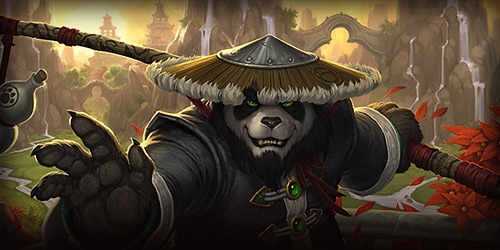

Going into Mists of Pandaria (Mists), we made fewer changes to our raid structure than in any prior expansion. Other than some improved handling of loot for Raid Finder (replacing traditional Need/Greed with personal loot), Mists raiding at launch followed the exact same structure as raiding in Patch 4.3: Dragon Soul. In retrospect, the lack of change actually reflects another miscalculation on our part.
We knew that the Cataclysm changes had effectively removed a difficulty level from our game by raising the challenge of 10-player Normal to match 25-player, and that this change had left a group of players without suitable raid content. By adding Raid Finder, we had returned to three effective difficulties, and given the popularity of the feature, we assumed that this largely solved the problem. We were mistaken.
Raid Difficulty and Raid Groups—An Aside
In broad strokes, there are three distinct types of groups that participate in organized raiding:
- Friends and Family groups: These are social groups that exist for reasons besides raiding, but whose players would like to venture into raid content together. This type of group is inherently inclusive, and will not organize its roster according to specific class needs, nor is the group likely to criticize or remove players based on performance. Members of this type of group prioritize playing together.
- Raiding guilds: These are groups that have formed for the purpose of raiding. These are the majority of guilds that you’ll see recruiting in Trade chat or on realm forums. These groups will generally look for specific classes based on roster needs, and will expect a certain level of attendance or performance. Members of this type of group prioritize experiencing and learning the content.
- Hardcore raiding guilds: An extreme subset of the previous category, these are the guilds of players whose ethos drives them to be the best at games they play, and who are willing to dedicate time and energy to maximize their results. Guilds of this type will recruit and maintain a roster based primarily on performance, and will expect raiders to optimize their characters. Members of this type of group prioritize competition and success.
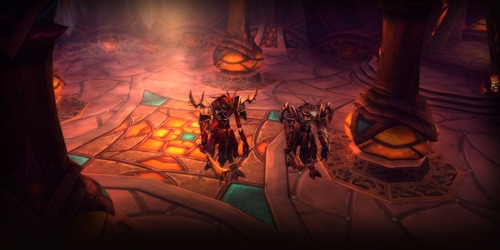

At the start of Mists, Normal modes appealed solidly to raiding guilds, and Heroic difficulty provided a worthy challenge to the hardcore guilds. However, friends-and-family groups—which had once thrived in Karazhan and in 10-player Normal raiding in Wrath—were left without much satisfying content. They made some headway in the new raids, but often got stuck at Elegon (Mogu’shan Vaults) or Garalon (Heart of Fear) without any clear way forward. Running Raid Finder could have helped them get better gear to overcome these challenges, but that often simply wasn’t enjoyable. For the player who just wants to play with his or her friends in a tight-knit environment, solo-queuing was not a satisfying experience; even queuing for Raid Finder as a group wasn’t much better, since the presence of a dozen or more strangers transformed the nature of the activity. Besides, Raid Finder was tuned for randomly matched groups and generally lacked sufficient challenge for even the most casual of organized raid groups.
We realized that we were doing a poor job of serving this important segment of our player community. Raid Finder, it turned out, was great for players who had no interest or ability to participate in organized raiding at scheduled times, but for friends-and-family groups, it was not an adequate substitute for the old 10-player Normal difficulty that went away in Cataclysm.
For the Siege of Orgrimmar, we introduced a new raiding mode that was designed primarily to solve this problem: Flexible Raid mode was tuned to be roughly 20% to 25% easier (numerically speaking) than Normal mode, while preserving all of the fight mechanics, but more importantly, it also made use of a new scaling system to allow the content to adapt to any raid size between 10 and 25 players. For players whose priority is just being able to raid with their friends, why force someone to have exactly 9 or 24 friends? Why limit which friends they can play with to those on the same realm? We made Flexible Raids have their own lockout, and we allowed players to kill the same boss multiple times per week—but only loot it once. In general, our aim was to remove as many obstacles as possible that might get in the way of friends who just want to be able to raid together in WoW. (And for those who are wondering, “Then why not allow cross-faction raiding? Why not let me raid with my Alliance friends even if I play Undead?” Fundamentally, Alliance vs. Horde, Orcs vs. Humans, is the heart and soul of the Warcraft universe—we have to draw the line somewhere, and we draw it there.)
We’re tremendously happy with how players have received the new Flexible Raid mode, and we wish we’d implemented something like this sooner. We’re now back to three tiers of difficulty that cover all of the different kinds of organized raiders, while preserving Raid Finder for those who just want to experience the content on their own schedule.
In Part 3, we’ll take a look at the future of raiding in Warlords of Draenor.
As expected blizzard released the first part of their raiding philosophy blog today! Today Watcher takes a look at raiding in Vanilla, The Burning Crusade and Wrath of the Lich King.


Over the course of WoW’s nearly 10-year history, raiding has probably undergone more iteration and change than any other game system. To put the upcoming Warlords of Draenor raid changes into proper context, this three-part blog series will attempt to retrace the twists and turns of our raid design philosophy from Molten Core through Siege of Orgrimmar. Veterans will hopefully enjoy the trip down memory lane, and we hope those who discovered raiding later on will gain some insight into how things used to be . . . and why they changed.
Classic World of Warcraft (2004-2006)


At the launch of WoW, there were two formal raid zones: Onyxia’s Lair and the 10-boss Molten Core, the latter of which was originally only accessible by traversing Blackrock Depths. During the first few months after the game’s release, instances in general didn’t have any cap on the number of players that could enter at once, as long they were all in the same group (15-player Stratholme and Scholomance “raids” were not uncommon back then). With the upper limit on group size set at 40, 40-player raiding became the de facto standard for the early raid zones, since bringing more players generally made things easier (with a few exceptions).
When the world of Azeroth was brand new, the overall pace of leveling significantly slower than it is today, such that the primary occupation for a majority of players was simply striving to reach max level. And even for the most cutting-edge players, many of whom were familiar with the leveling experience from the beta, it took two months from release for the first group to defeat Lucifron, the first boss in Molten Core.
Therefore, applying the tried and true principles of Internet forum logic, Lucifron was clearly more challenging than Garrosh—or any boss in the past 5 years for that matter. OK, maybe not. The delay was due not to the bosses’ difficulty, but rather the fact that it took even the most dedicated groups with extensive raiding experience from past MMOs that long to assemble a sufficiently large group of level-60 players who had obtained the appropriate dungeon and endgame quest gear. In many ways, that was the most challenging aspect of classic WoW raiding: the logistics of assembling and maintaining a sufficient roster with sufficient gear.
Over the year and a half to follow, Blackwing Lair, Temple of Ahn’Qiraj, and the original version of Naxxramas were introduced, providing an increasing level of challenge for groups that had already completed Molten Core. These raid zones all were tuned around both a full 40-player group and the expectation that players possessed a significant amount of raid gear, which meant that by definition fewer and fewer people were able to participate in each successive tier of content. New players joining the game during the summer of 2006, at the height of Naxxramas progression, had virtually no hope of ever seeing Kel’Thuzad. At best, they might level quickly and get enough dungeon gear to join a guild that was still doing Molten Core.
In parallel, we introduced two 20-player raid zones, Zul’Gurub and Ruins of Ahn’Qiraj, allowing smaller groups to experience epic content on a scale beyond that of dungeons. These 20-player raids placed more individual responsibility on the shoulders of raid members, due both to the smaller group size and the comparative difficulty of the encounters. Encounters like Jin’do, Hakkar (now retired), and Ossirian were proof that there was plenty of room for involved and challenging encounter mechanics in smaller raids.
The Burning Crusade (2007-2008)
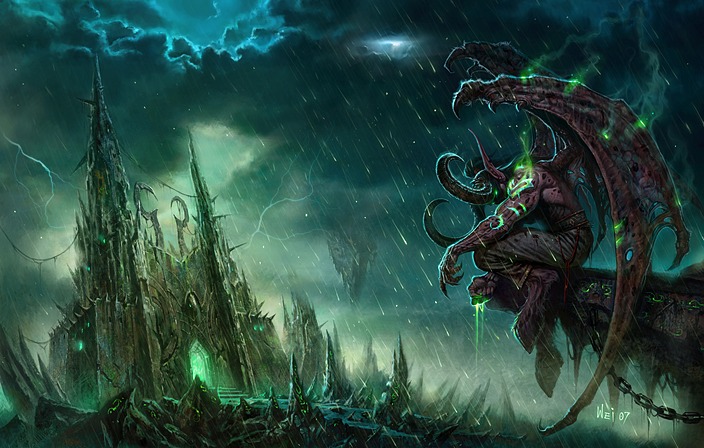

Moving into The Burning Crusade, we made the first of our raid structure adjustments, reducing the maximum size of the largest and most challenging raids from 40 to 25 players. This change had two objectives:
- Improve the gameplay experience for the members of raid groups. One lesson we learned from the experiments of Zul’Gurub and Ruins of Ahn’Qiraj is that bigger raid-group sizes didn’t necessarily make players feel more heroic. In fact, when a raid group had 15 healers and two dozen damage-dealers, each individual player’s role often was reduced to that of a cog in a machine. With a somewhat smaller size, individual actions had more impact, and there was more room for a single player to make a difference for the group as a whole—while still keeping enough moving parts for strategically complex encounters.
- Make raiding more accessible. Quite simply, it’s easier to assemble 25 players than it is to assemble 40. It’s also easier to manage a roster of that size. Many guilds used complicated loot systems in order to handle active rosters of 50+ players. Other guilds needed class officers to keep track of the nine priests in the guild. On a personal note, as someone who spent most of classic WoW maintaining my guild’s zero-sum DKP system, complete with a dozen custom rules, this change was an incredible quality-of-life improvement.
Along with lowering the maximum raid size, The Burning Crusade also introduced true 10-player raiding for the first time (you could argue that Upper Blackrock Spire was first, but that was more of a 10-player dungeon given its structure). The individual encounters in Karazhan were quite challenging, especially in the zone’s first iteration, but this new size brought raiding within reach of an all-new group of players: “friends and family” groups. A tremendous number of players came to World of Warcraft with a small group of coworkers, classmates, family, and online friends from other games. For the first time, groups like these could raid as self-sufficient entities, perhaps needing to find only a couple of additional players from their realm. However, those groups still could not experience much of the game’s signature content: Illidan taunted everyone who watched The Burning Crusade trailer with his infamous line, “You are not prepared,” but unless you had 24 companions with you, you could never see the expansion’s major villain firsthand within Black Temple.
At The Burning Crusade’s release, the 25-player raid content was mistuned: In many ways, encounters like the original Gruul and Magtheridon picked up where classic’s version of Naxxramas had left off, providing stern challenges for the best guilds in the world, but presenting a brick wall to the rest of the raiding population. This was corrected by Patch 2.1 a few months later, which also established the precedent that each expansion’s raids would be self-contained and would provide an entry point for players who were brand new to raiding.
Patch 2.4 introduced the 25-player Sunwell raid, which continued in the classic progression model by serving as the pinnacle of the raiding pyramid, accessible only to the very few players who had mastered Black Temple and Mount Hyjal. More significant as a sign of things to come, however, was the introduction of the Isle of Quel’danas Badge of Justice vendor, as well as Magister’s Terrace. Badges of Justice were not new, but this was the first time that questing and dungeons allowed access to items that were truly comparable in power, or superior to, many of the raid items from the first two tiers of 25-player The Burning Crusade raiding. Along with the removal of attunements, this meant that for the first time, players could entirely bypass those tiers if they wanted to gear up and prepare for zones like Zul’Aman or Black Temple.
Wrath of the Lich King (2008-2010)


Every patch of Wrath of the Lich King brought with it a major innovation and fundamental shift to the raiding landscape. It was primarily over the course of this expansion that raiding was molded into the form that will be recognizable to most WoW players today.
Patch 3.0: Naxxramas, Obsidian Sanctum, and Eye of Eternity
From the outset, Wrath’s major change was offering parallel 10- and 25-player versions of the same raid zones. This addressed the issue of much of the game’s most epic lore and content being out of reach for those without 25-player groups, and it also allowed us to design content to serve multiple audiences. The 25-player version was tuned to be more challenging, and offered separate loot tables with more powerful rewards. Learning lessons from early The Burning Crusade tuning, Naxxramas, once the playground of the elite during classic WoW, was reintroduced as a highly accessible entry point to raiding. From friends-and-family groups to established raiding guilds to the nascent pickup-group scene, Wrath opened raiding up to a far wider audience than ever before.
But even 25-player Naxxramas was fairly lenient for guilds coming straight from Sunwell. With Ulduar development well underway, the main feature to occupy top guilds’ attention in the interim was Sartharion’s variable difficulty level within The Obsidian Sanctum. The black dragon was accompanied by three drakes, who would join in the fight and empower Sartharion if left alive. Defeating Sartharion with two drakes active awarded loot from a different, higher level table. Defeating him with all three awarded a special mount and title. The core philosophy here was simple: All players get to see the Obsidian Sanctum and experience the fight, but players looking for an extra challenge can take on a tougher version of the same encounter and be rewarded accordingly. As with many of our experiments, this one’s success laid the groundwork for what was to come.
Patch 3.1: Ulduar
Ulduar took the Sartharion model and expanded upon it, introducing a full tier where 9 of the 13 encounters had an optional “hard mode” that awarded superior loot if completed. This established the new norm for how raid content would be introduced: While average guilds slowly and methodically learn each encounter in a zone, top guilds quickly clear through the regular versions of the encounters and then spend weeks or months progressing through the harder-difficulty versions.
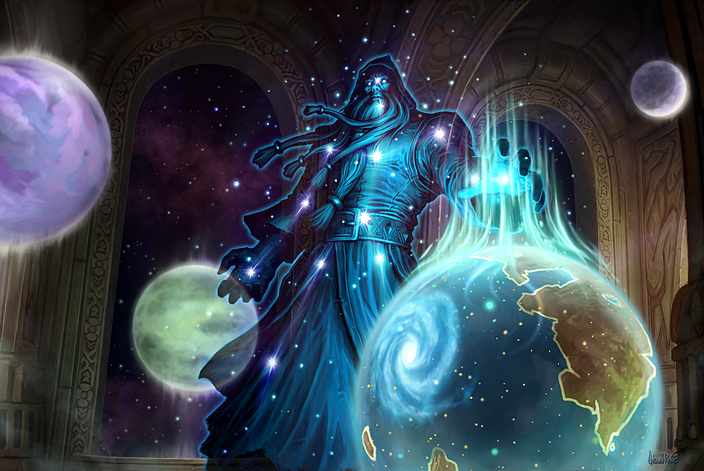

Patch 3.2: Trial of the Crusader
Once it became clear that we were satisfied with the multiple-difficulty paradigm, we decided to formalize things. While many players had (and continue to hold) a fondness for organic hard modes that could be enabled by specified actions within an encounter, they were inconsistent and often lacking clarity. Some of them (The Assembly of Iron, Freya) were elegant and intuitive, but others were frustrating or created traps for players (“Whoops, you killed Hodir in 121 seconds, try again next week!” or “Stop DPS, don’t kill XT’s heart!”). Others still were too obscure and unlikely to be discovered without reading a guide (General Vezax). We already had an established method for handling this problem in another kind of content: Since The Burning Crusade, we’d had two versions of our dungeons, each with different difficulty levels, rewards, and often varying mechanics.
Thus, in patch 3.2, we released four versions of Trial of the Crusader (10- and 25-player, each with a Normal and Heroic difficulty). While in many ways 10-player and 25-player Naxxramas had been equally easy, with Ulduar and Trial of the Crusader there was a more marked division in tuning between the two modes. When in doubt, we never hesitated to err on the side of making the 10-player version easier, due to the difference in rewards. Functionally, in terms of both tuning and itemization, we had three distinct levels of raid difficulty: normal (10-player Normal), hard (10-player Heroic/25-player Normal), and very hard (25-player Heroic).
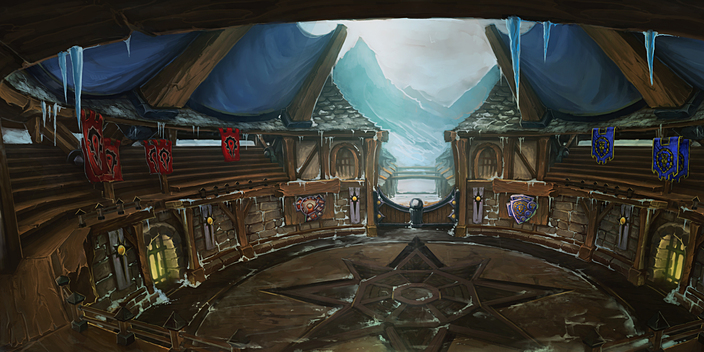

Having multiple difficulties was hardly a new concept in gaming, but when applied to raiding, it allowed the same content to provide a compelling experience for an even wider range of players. Ultimately, organized raiding feels most satisfying when players encounter a challenge—they strategize, adapt, and practice their execution, and then are able to overcome that challenge. Then in the following weeks, they can come back and demonstrate mastery over something that once seemed difficult. Players’ appetite for failure varies tremendously by play style and temperament, but regardless, few will consider an encounter that they defeat in a single attempt with no prior preparation to be particularly satisfying, and most will be frustrated by an encounter that feels hopeless even after many attempts. Our goal is to hit that tuning sweet spot for as many players as possible, and having multiple difficulties is the mechanism to make that happen.
It may be of interest to note that at that time, we very nearly did not include a 10-player Heroic difficulty at all. There was limited evidence to support that many players other than 25-player raiders were actually doing 10-player Ulduar hard modes, but relying on anecdotal evidence and some firsthand experience, along with the fact that there hadn’t been much time at all for a serious 10-player raiding scene to develop, we decided to keep that difficulty.
Patch 3.3: Icecrown Citadel
Going into the final tier of Wrath, we realized that we needed to do something about the one major drawback of the Trial of the Crusader structure: Players were routinely clearing the content up to four times a week on the same character, for Emblems of Triumph if nothing else. That was somewhat sustainable, though not ideal, in a 5-boss raid with no other enemies between the boss fights. It would have been a burnout-inducing mess in the 12-boss Icecrown Citadel. To address that, we combined Normal and Heroic mode of each raid size into a single raid lockout and allowed players to switch dynamically between the two difficulties mid-raid.
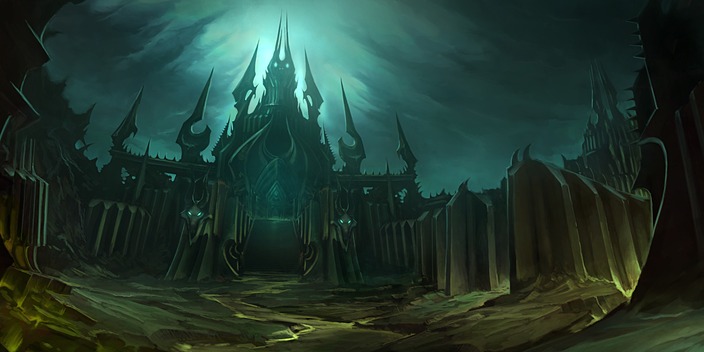

Overall, Icecrown Citadel was a vibrant time for raiding in WoW, with memorable content and multiple difficulty levels and raid formats to accommodate a wide variety of players.
In Part 2, we’ll take a look at raiding today, tracing the evolution of our raid systems from Cataclysm through Mists of Pandaria.
Due to Kingsday in the netherlands yesterday we were unavailable for the podcast on saturday and recorded it on sunday instead. This week we discussed many aspects of the garrisons, active mana regen for healers and when WoD could possibly be released.
Blizzard put a teaser out on twitter today, showing a new mount! It mentions using with friends so there’s a good possibility it’ll be a new recruit a friend mount!
Fiery mechanical steeds are best when they can be used with friends. Coming Soon™. pic.twitter.com/M8ulGgD105
— World of Warcraft (@Warcraft) April 25, 2014



